A Prairie-Style Shakespeare Garden
Tucked away in a corner of the Northwestern University campus is a beautiful garden with an unusual history. That history began in 1915, when the Garden Club of Evanston joined in a nation-wide effort to create gardens memorializing the 300th anniversary of William Shakespeare’s death.
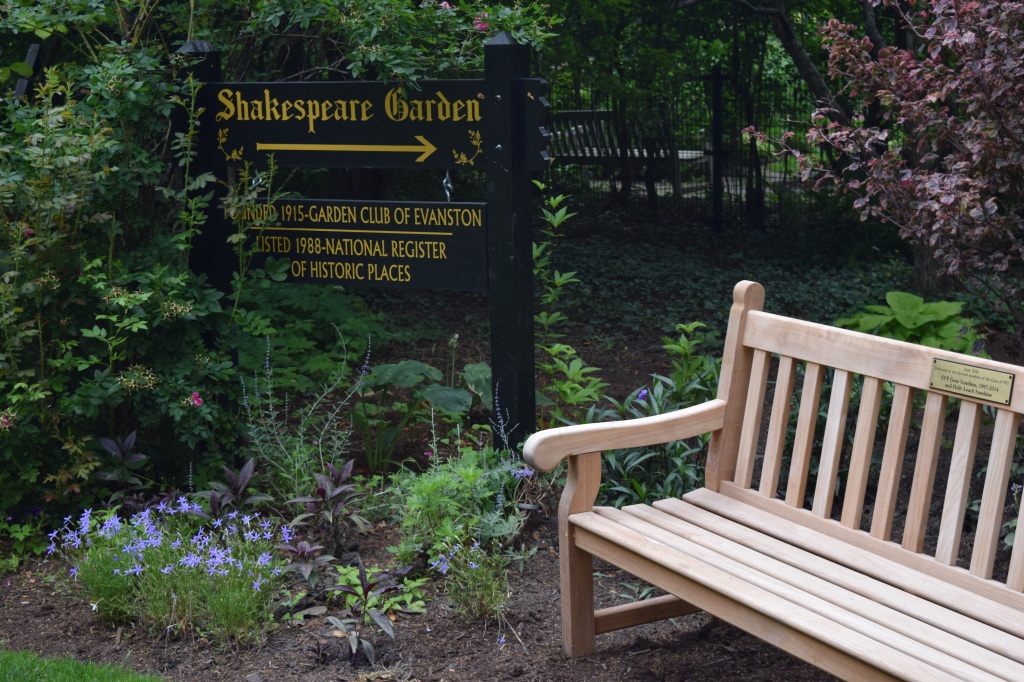
Surprisingly, the designer was Jens Jensen, advocate of naturalistic and prairie-style gardens. This was one of only two formal gardens designed by Jensen during his career, the other being a rose garden he created for Henry Ford. This garden was intended to showcase plants mentioned in Shakespeare’s plays, but it is also full of prairie natives.

An intimate garden, just 70 x 100′, it is surrounded by a double row of hawthorne hedges.
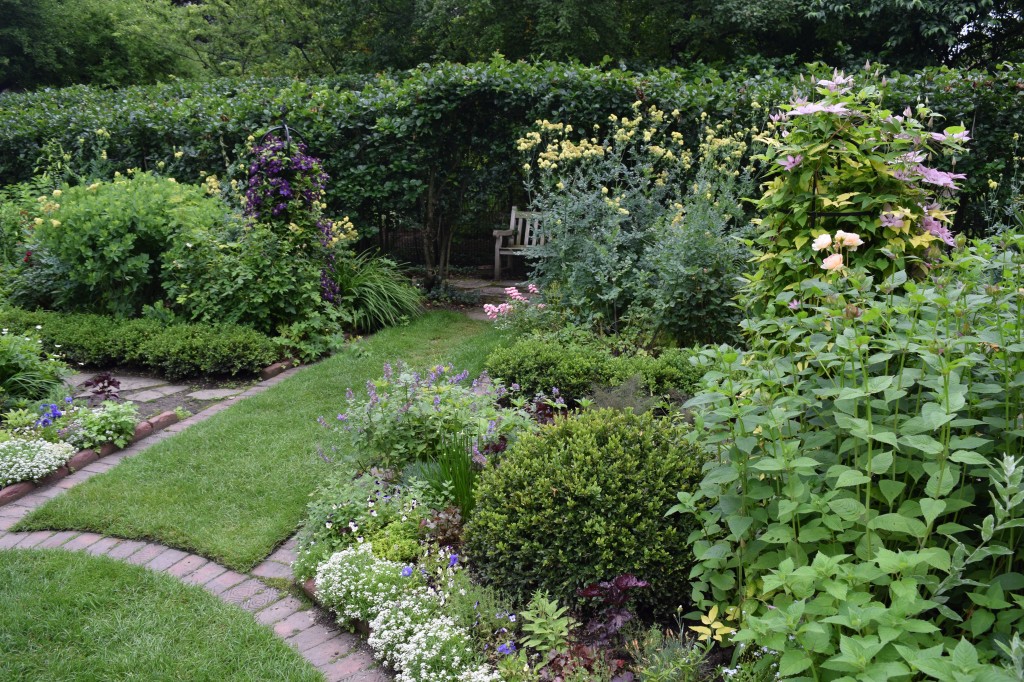
Openings in the hedges reveal secluded benches, which look perfect for both contemplation and assignation.
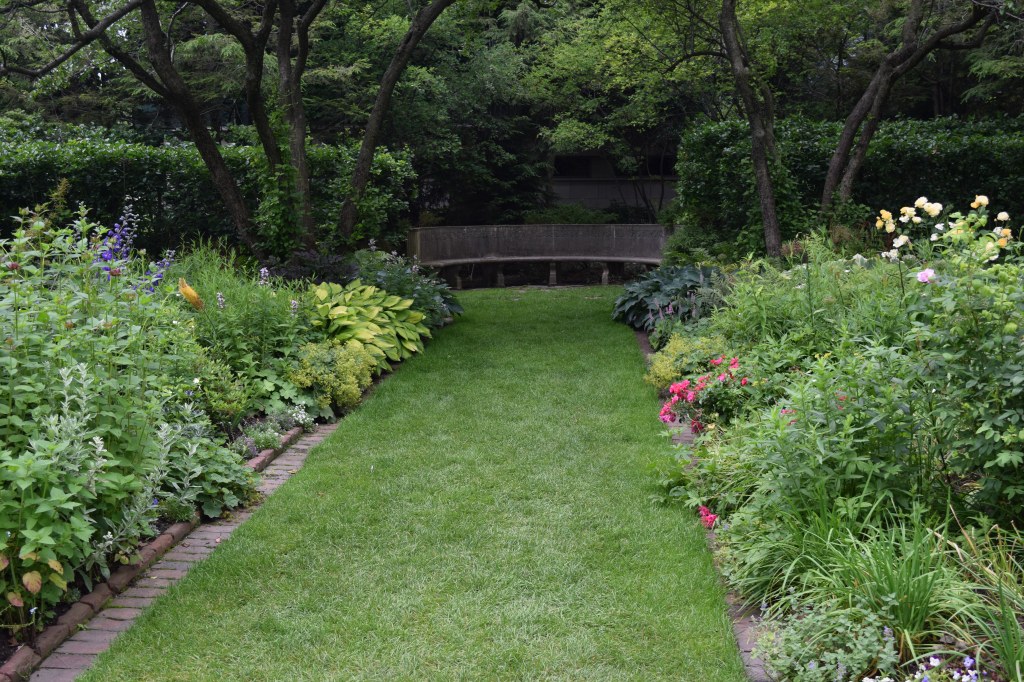
At one end there is a curved concrete bench overhung with serviceberry (Amelanchier). Both the serviceberry and hawthorn are Midwest natives. We watched the robins plucking ripe berries from the branches.


At the opposite end there is the Shakespeare monument, which includes a plaque of botanically-themed verses.
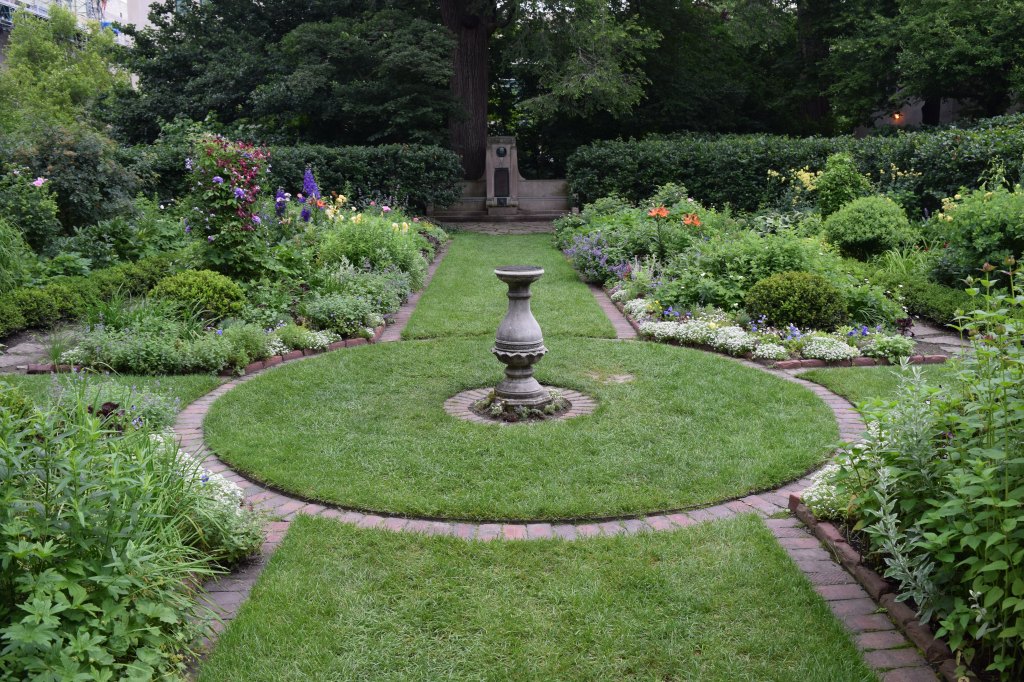
In between there are four symmetrical rectangular beds with a sun dial in the center.
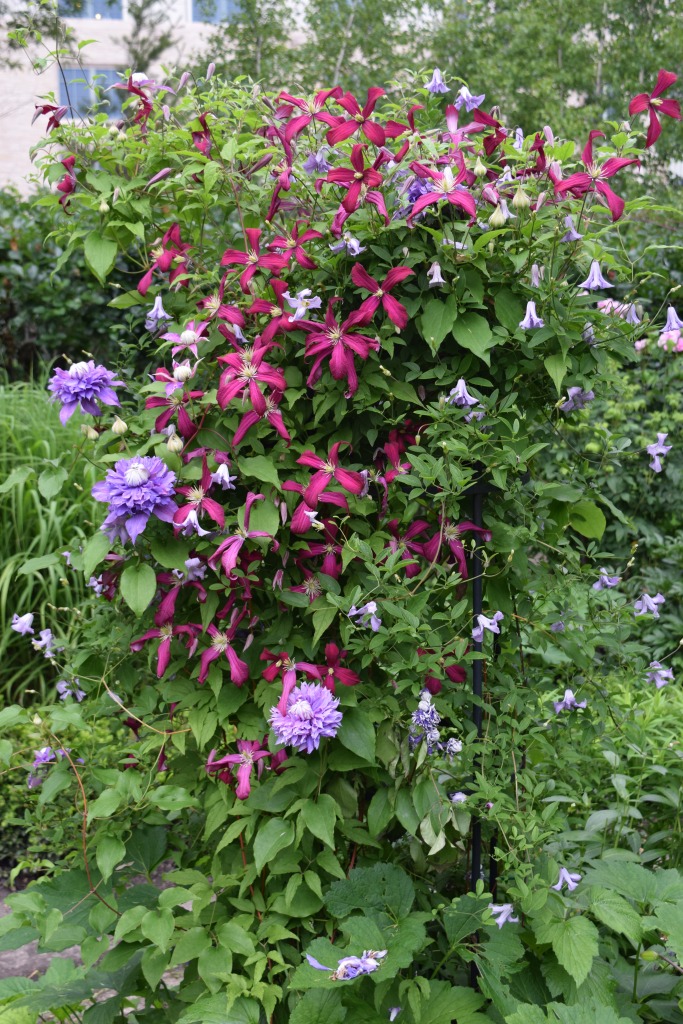

The garden today is much less formal than the one originally designed by Jensen, in part the result of changes made in 1990 by the English garden designer John Brookes. Most of the boxwood was removed, and more perennial flowers were added. While the structure is still symmetrical, the plantings are not – though there is a good deal of rhythmic repetition.
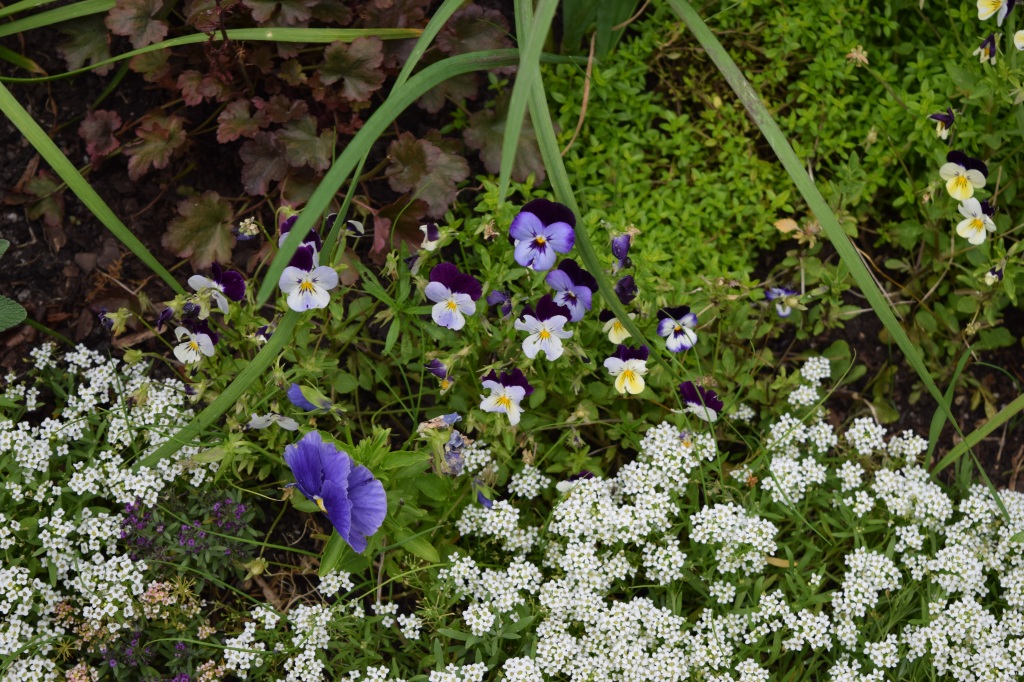
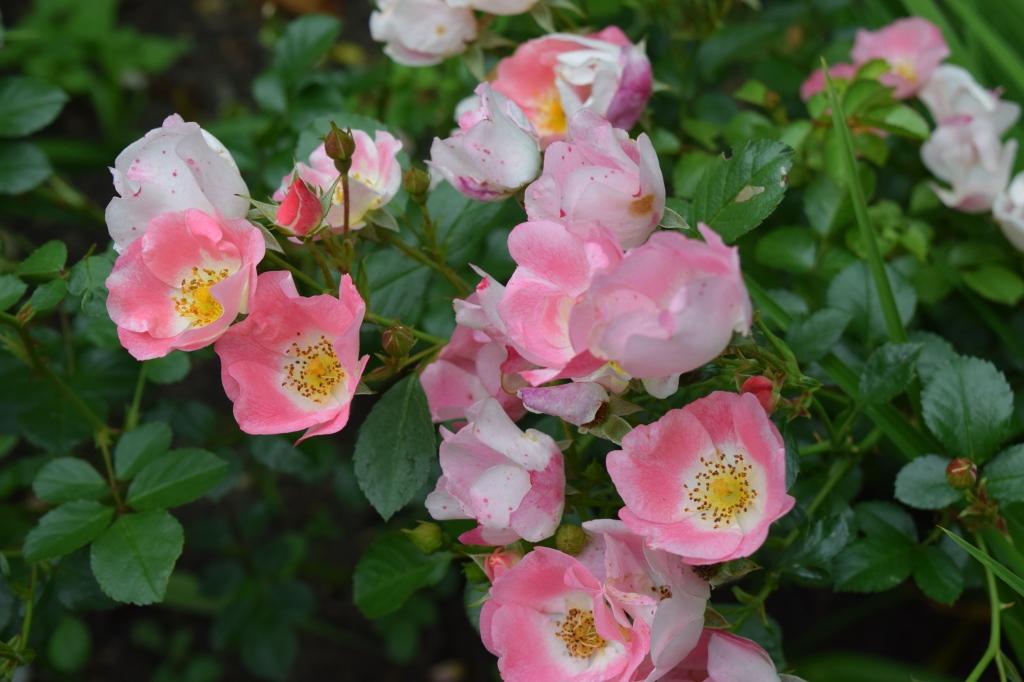
There are supposed to be 5o plants mentioned by Shakespeare, but I only recognized a few, including daisies and roses, poppies and pansies.
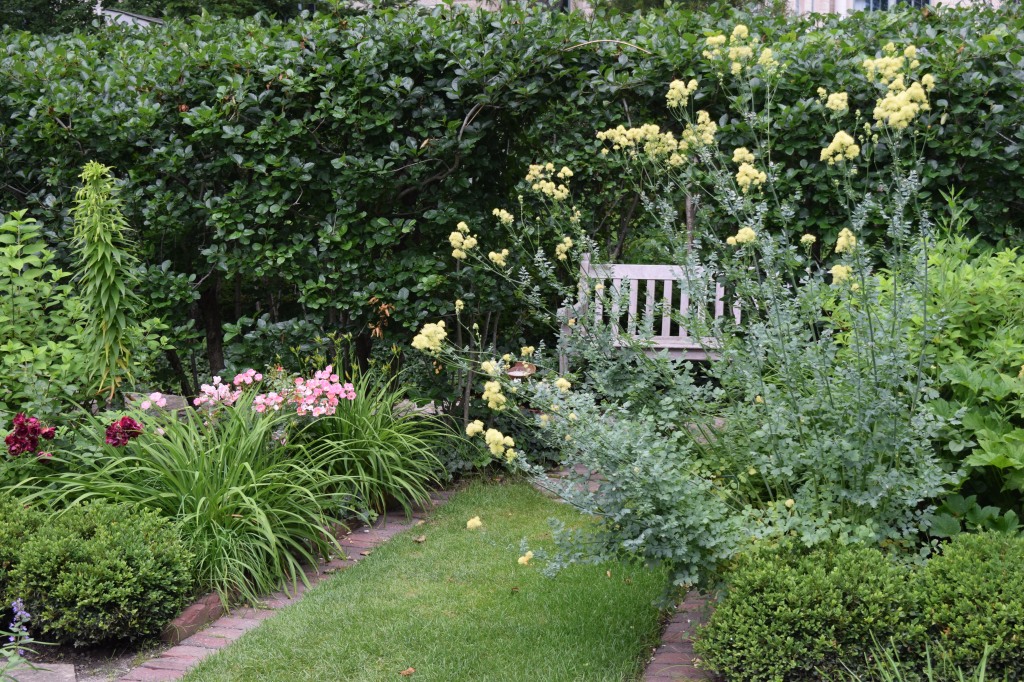
Several large and robust meadow rue were scattered about, and I wondered if they were intended to be a reference to the rue that is mentioned in Shakespeare. Completely different genus, but I suppose this could be the garden design equivalent of artistic license.
Praire perennials like wild indigo were also repeated throughout the garden.

Looking to the south you could see the towers of Garrett Theological Seminary, adding to the late Renaissance atmosphere (though I think Garrett is Methodist, so it probably belongs more in a Reformation garden).
While the Evanston Shakespeare Garden is by no means a replica of a Shakespeare-era garden, it is a tranquil and beautiful spot, perfect for reading poetry – to oneself or someone else.





That’s just what I was thinking… reading some Shakespeare sonnets while sitting on the curved bench would seem very appropriate! Thanks for sharing!
Unfortunately I left my Shakespeare sonnets at home. Actually, this may make me a barbarian, but I have never enjoyed Shakespeare’s sonnets.
Well it is a pretty garden but I think Shakespeare would be surprised to see it was named for him. There is nothing remotely Elizabethan about it and he wouldn’t t recognise most of the plants. But it must be a lovely place to linger in. I love the two clematis growing together.
Well, not many on this side of the Atlantic would know what an Elizabethan garden is supposed to look like. And I’m guessing historical accuracy was dropped as a goal long ago.
I enjoyed the tour of this garden. 🙂
Thanks!
Beautiful clematis and love the sun dial.
The clematis are really spectacular.
Well, something else I’ll have to put on my list if we are ever in your area again. What an amazing place. Imagine that it was designed in 1915! Thanks for sharing it.
You’re welcome.
I liked this garden very much, Jason! The design is nice and the combination of plants is wonderful. Especially clematis, violas, roses! The meadow rue is yellow and I have in my garden (and in my last post) light-pink one.
Yes, the clematis was especially lovely.
Interesting and beautiful too. Thanks for sharing this.
You’re welcome.
I enjoyed the photo-visit. Might be worth a “look up” next time I’m in the city. I enjoy checking out such sites in person once in awhile. I’m amazed by all the secret places tucked into the Chicago area.
There are a lot of worthwhile spots that are not well known at all.
Thanks for showing this garden. Btw I watched a TV programme whe it said they thought Shakespeare was a Roman Catholic and that may be the reason for his disappearing a few times in his life..
Interesting. I didn’t know he had periods of disappearance.
Beautiful garden! Love the circle w/in the cross, the curved bench, and that scrumptious rose!
There was also a yellow rose that I liked very much.
Your presentation of the garden is delightful. It’s a beautiful place despite the poetic license with the plantings. Interesting that it was redesigned to be less formal. I kept searching for rosemary and gillyflowers.
There was a lot of poetic license with the plants. I don’t think they were really emphasizing the Shakespeare aspect of the Shakespeare. garden.
What a beautiful place! I love tranquil, hidden places like this. Thanks for sharing.
You’re welcome.
I want that garden! Very peaceful and meditative. Shakespeare is credited with making up many new words–he probably would be open to introducing new plants to his namesake garden.
After seeing this garden I briefly fantasized about redoing my whole front garden as a four-square with a central axis. Then I came to my senses, but this garden made me see the appeal of that kind of layout.
I don’t usually like formal gardens much but the plants soften this one quite a bit. I’d certainly pay it a visit if I were in the area.
I think of it more as semi-formal.
Love it! So appropriate so near mid-summer.
You could take a nap there and have a mid-summer night’s dream.
Oh, yes! I will be visiting that one soon. I had no idea it was there but it looks enchanting. And Judy’s (your?) photos are lovely!
Yes, Judy was taking the pictures. The day turned suddenly cloudy, so the light was not optimal, but I agree her photos were lovely.
This does look a restful garden and quite English, what an interesting history it has too. Lovely post Jason.
Thank you. I’m glad you think it has an English feel to it – almost like a cottage garden.
I’m a librarian at Garrett, and I enjoy eating my lunch here as often as I can. You can find me on the bench in the south (shady) path, or on the curved bench at the back. Such a beautiful, peaceful spot.
It does look like an ideal place to have lunch. Do many others do the same?
What a precious little jewel of a garden. I loved the planting.xxx
“A little jewel” is a good description.
Oh jason this is beautiful…I love the nook and have a thing for sundial gardens.
The nooks made me want to come back every day with a good book.
I love all of the photos you are posting, sir. The flowers and the landscape design are timeless. =)
Glad you liked it.
Glad to know about this garden. I always enjoy Shakespeare Gardens.